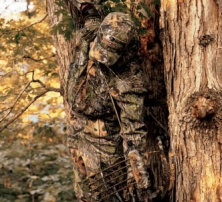Shoot Your Bow: Best Summer Practice
Standing in the backyard and burning arrow after arrow into foams target is a good way to get your shooting muscles toned and your release and follow-through down. But now is the time to raise your game and shoot from an elevated platform like you’ll do when deer season rolls around in 6 weeks or so. Why You Should Practice High When you shoot on the ground, you stand fence-post straight, plant your feet in a baseball hitter’s stance, stare across at your target, draw with ease and let an arrow fly. Pretty simple. In a tree stand, you have to stand up on a small platform; turn your body; and your footing is trickier. Leaning left, right, back or [...]





